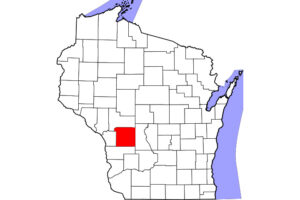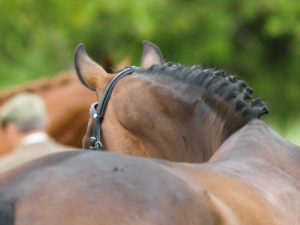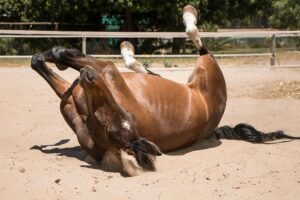Building a Healthful Horse Barn

Building your own barn for your horses can be very exciting, but don’t rush the process; keeping some safety and health tips in mind is important to make the space as healthful for horses as possible. Moira Nusbaum, DVM, owner of PenMar Equine, in Myersville, Maryland, offered her advice on building your own barn.
Q. I just bought a small piece of land that I want to eventually move my horses home to, but there is no barn on the property. When designing the barn, what do you recommend I keep in mind?
A. This is a great question, as we are seeing more and more clients buy their own properties to keep horses at home. Building a barn for your horses can be fun, but lots of planning before the big move will come in handy. Choose a builder who is familiar with horse buildings and choose a location that maximizes shade and windbreak (east- or west-facing) and drains well. Preplanning when building your own farm will make the move as seamless as possible, and there will be less you to need to fix later on.
From a veterinary perspective, it’s always helpful to have a space where we can keep horses confined if needed (for wound care, colic observation, grass restriction, and other times when the horse needs to be in a smaller space off grass). Even if you don’t plan to build stalls for regular use, consider a three-sided area you can close off with a horse-safe gate or panel when needed.
Also equally important, make sure your feed/medication storage area can be safely secured to prevent horses from getting into the grain bin. If a separate feed room isn’t in the plans, consider a large bin/receptacle you can lock (as opposed to unsecured metal trash cans, which can be easily broken into by both the horses and other critters).
Ventilation is also very important to keep in mind. Stalls should ideally have a window for air flow but, if that’s not possible, an aisleway with doors on both ends will keep air moving. Consider stacking hay somewhere other than right above the stalls, as sometimes the dust this creates can cause respiratory issues for horses.
Don’t forget to make your barn easy to clean and disinfect when needed. Stall mats are not only cushy and more comfortable than concrete or dirt floors for the horse, but they also make disinfecting easier if you have a new boarder coming into a stall or in case of infectious disease. At the same time, the stall flooring needs to be able to drain, so moisture—especially the ammonia associated with urine and manure—can escape.
Finally, horses love to get themselves into trouble! Choose horse-safe hooks, buckets, and door latches. Watch carefully for any exposed nails, screws, or sharp edges of wood through the building process. It’s much easier to fix these issues before horses have a chance to injure themselves. Have fun with the process and enjoy having your horses at home!
Written by:
Moira Nusbaum, DVM
Related Articles
Stay on top of the most recent Horse Health news with



















